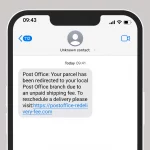Giffgaff Expand UK Full Fibre Broadband Trial with Extra Speed Options

Mobile network provider giffgaff, which is owned by Telefónica and uses O2’s associated virtual operator (MVNO) platform, has provided customers of their new home broadband trial – based on nexfibre and Virgin Media’s 10Gbps capable full fibre (FTTP / XGS-PON) network – with additional speed options other than 500Mbps.
The trial has been running with “up to 500” live customers for a couple of months now (here and here). The service initially only offered a single package, which offered symmetric speeds of 500Mbps on a 12-month term for the heavily discounted price of £10 per month. Such pricing is only for the trial period and won’t reflect their final retail pricing, which is likely to be higher.
Customers who have signed-up to this typically seem to be ending up with exterior kit that still features Virgin Media’s branding (pictured), as well as an Optical Network Terminal (ONT) inside their homes from Arcadyan Technology (PB6802B-LG) and one of Amazon’s Eero 6+ routers (UI features giffgaff’s branding).
Advertisement
The main change this week appears to be that giffgaff have now introduced two additional trial tiers for customers. The first is an entry-level style 200Mbps package for the ridiculously low price of £5 per month, and the next is a higher end 900Mbps tier for £15 per month (although we’re starting to view 900Mbps as more of a mid-tier in the current market). Credits to couldbefaster on our forum for the update.
At present we don’t know when the commercial launch will happen or what their final packages / prices may be when that occurs.
Mark is a professional technology writer, IT consultant and computer engineer from Dorset (England), he also founded ISPreview in 1999 and enjoys analysing the latest telecoms and broadband developments. Find me on X (Twitter), Mastodon, Facebook, BlueSky, Threads.net and Linkedin.
« Sky Mobile UK Offers Discounted £1 Pay Monthly 5G SIM Only Plan
Advertisement
Leave a Reply Cancel reply
Privacy Notice: Please note that news comments are anonymous, which means that we do NOT require you to enter any real personal details to post a message and display names can be almost anything you like (provided they do not contain offensive language or impersonate a real person�s legal name). By clicking to submit a post you agree to storing your entries for comment content, display name, IP and email in our database, for as long as the post remains live.
Only the submitted name and comment will be displayed in public, while the rest will be kept private (we will never share this outside of ISPreview, regardless of whether the data is real or fake). This comment system uses submitted IP, email and website address data to spot abuse and spammers. All data is transferred via an encrypted (https secure) session.























































So if you have no other fast FTTP ISP, when this is a fully fledged product offering, it’s one way to have VM’s fibre and use your own router then as an ONT supplied, not insistence on a HUB5x that doesn’t have a modem mode for using your own router.
Plenty of us on vermin nexfibre have abandoned the hub5x for our own ONTs!
True, for those few techy people. If an issue though with service at any point, you’ll get zero support, and if VM find out, they could say you are in breach of service agreement. They can also close up that loop hole in SFP’s in routers – it’s pretty easy to do. They are probably just unaware, or numbers far too low at the moment to bother.
Much better they just add modem mode like the coax/RFoG network has with the HUB5.
Rich what ONTs are being used as I’ve tried on from TPLink and it won’t work?
The change from 500Mbps can only be made 1 month after initial service startup. Subsequent changes cant happen earlier than a month from any previous change.
I’m on the trial and for our use 500 is fine, let’s see what the main rollout prices will be, whenever that happens.
Our service startup was delayed a week due to a faulty eero router.
Online chat support was excellent, hopefully this uk based support will continue.
Apart from the issues the speed is consistent and GG offering is
excellent!!!
This trial from GG and possible move to full blown service is good, the downside being you need to live in a NexFibre build area, at the moment. NexFibre builds have stalled recently as we know.
Looking at the picture above and the old telephone cable running over the Virgin trunking, looks bad! What time would it have taken to make a little track in the cement between the bricks and have the cable run below?
This is a stock image that Mark always uses and I have commented on this before. It wouldn’t have taken much to take a little bit of the pointing out and let it into the wall behind it but no doubt the installers are not allowed to do that.
Agree, not that it makes much of a difference but our recently installed box is grey, a little easier on the eye and the same colour as the OpenReach box.
900mbps at midrange? I’d argue that’s more on the high end and most people don’t need that sorry.
BT said the same thing about FTTC back in the day that nobody needed over FTTC speeds. New apps come along, who is to say in the future 900mbps is not minimum package. Everything eventually will be connected up from fridges to goodness knows what. The data the government and others can harvest along with “control” of the masses, will be too attractive and this stuff will be in real time.
The new high-end is multi-gig from altnets. CFL was offering 3Gbps for £99/month in Nov 2020; last week it was 5Gbps for £39.
Yes, arguably it’s not “needed” but you could say that about disk speeds too until the benefits became obvious – tape was replaced by floppies, HDDs, SATA and then NVMe SSDs, each offering a benefit for high performance apps which until then might require a cluster.
To take it back to consumers: why do we have to wait even a few minutes for games to download from Steam? They could run instantly, streaming DLLs and content on demand from the cloud while saving to disk in the background. That wouldn’t give a great experience for most people now but reduce latency and increase bandwidth and it becomes feasible – and helps justify a relatively higher price.
The faster they upgrade all their HFC and RFoG areas to XGS-PON the better so they can have options like this
(I know they are doing and hopefully they don’t stop, I know Telefonica won’t like spending money now for an easier future if they are let to be in control of the business)
If Telefonica decide not to, it’s game over. They will just decline into oblivion as BT progresses FTTP roll out and of course, the rose smelling ALTNETS.
LG in Europe and US went mostly with DocSIS 4. The UK situation was different, as various parts of VM’s combined coax network inherited from many cable companies has differing engineered parts and a lot have “noisy” segments or need re-segmentation and extra kit at street level. Hence, why they decided to just go to FTTP because the cost difference was within acceptable range and future proofed the network allied to what competition was doing with proper full fibre.
PP Verify, no AI used:
‘LG in Europe and US went mostly with DocSIS 4.’
LG have no cable operations in the US.
‘The UK situation was different, as various parts of VM’s combined coax network inherited from many cable companies has differing engineered parts and a lot have “noisy” segments or need re-segmentation and extra kit at street level.’
The move to XGSPON in the UK is nothing to do with the condition of the cable plant or the active components in them. It’s because the UK cable networks are underground and fully ducted which brings the cost of XGSPON versus 4.0, the biggest upgrade the cable network would’ve ever seen, closer together.
To deliver 4.0 almost every powered component in the entire cable network installed before about 2015 would’ve needed replacing along with changes to home install and replacement of much of the passive hardware too. Wouldn’t have been much left untouched besides the coax.
There’s not actually that much of the original active network hardware left in many areas, it was upgraded to increase the upstream spectrum and allow for the original 10:1 upstream ratios back in early 2010s or more recently for the extra spectrum for DoCSIS 3.1 upstream.
The UK isn’t unique here either, LG’s NetCo in Belgium is overbuilding there.
TL;DR none of that mattered, all that mattered was where the cable was, in ducts.
‘Hence, why they decided to just go to FTTP because the cost difference was within acceptable range’
Even though you got there for the wrong reasons that’s correct. The 4.0 cost and the XGSPON cost per home passed are within a third of each other and the 4.0 cost was at more risk of going higher than the XGSPON one.
‘and future proofed the network allied to what competition was doing with proper full fibre.’
That is irrelevant though. The Netherlands joint venture with Vodafone seems to be going 4.0 despite the proliferation of FTTP there due to costs of total overbuild relative to 4.0. 4.0 is easily capable of symmetric gigabit and 2.5 gigabit with asymmetric services above that.
In the Netherlands the cost of XGSPON is higher and 4.0 is less likely to increase due to the network construction there. Specifically the cable networks are laid out as stars.
Belgium the cost of XGSPON is higher but the cost of 4.0 is also higher as those networks are tree and branch.
UK the cost is in between the two but cost was the main thing. As mentioned 4.0 would have been the biggest cable upgrade the UK has ever done, FTTP deployment technology has come along and for the first time the costs of the two are relatively close.
The steps to upgrade coax networks are discussed at https://youtu.be/bOAjzKY51-I?si=S-lvhe9luJj7J_1r and 4.0 the change would most likely be going to 1.2 GHz with 1.8 GHz capability alongside the changes to in-home installation mentioned and terminating the coax at the gateway in the home, not running it to STBs.
@Rich: If using your own ONT with Virgin/NexFibre how do you go about getting it authorised. With Openreach installs the engineer scans the barcode on the ONT. I can imagine if you were to contact customer services in India, telling them you have your own ONT, there would likely be a problem from an agent reading from a script.
The details of the ONT part of the router are printed on the sticker. You use an ONT that can use custom values and use the same values as the VM provided Hub5x.
They will know what we are doing if they actually cared due to the custom ONT not providing the exact data the hub does to the OLT and the hub can’t be monitored by VM either
@Kevin: Have found the info on the ONT that replaces the one on the 5x, and where to purchase, which will allow the use of a router of choice. Although it is working well for people, it gets hot in use, with some using fans to keep it cool. The cost of the new ONT and router to suit may be prohibitive for some.
@Kevin: Thanks for the info Kevin, was wondering how this was possible. What make of ONT is most widely used for this, that’s if you would like to share.
was 110
Not avalible for houses already with a nexfibre line installed, isn’t that just appualing?
How do I cancel this product